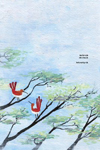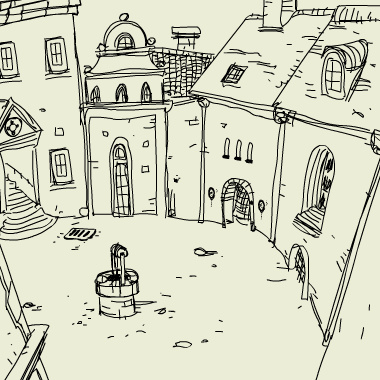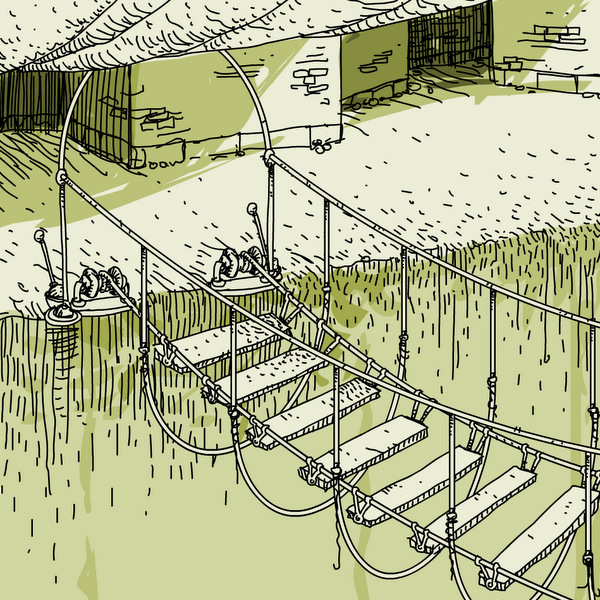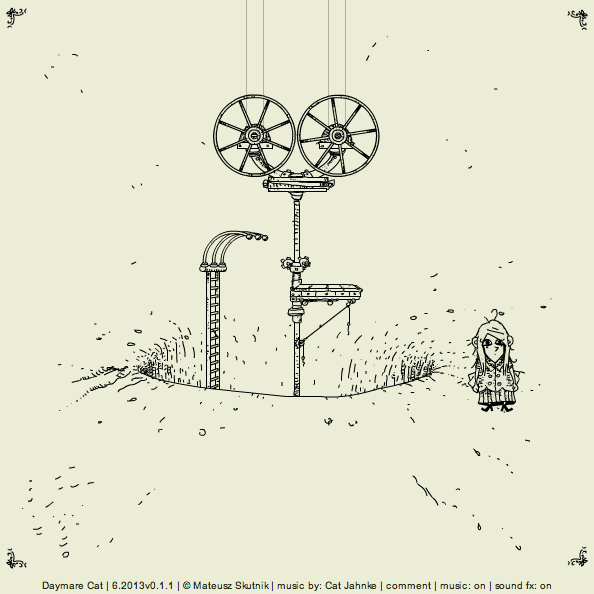Daymare Cat; StarBlog review
August 8, 2013
 Most of the time I would much rather play video games on my consoles and on my handheld systems, but I will admit that there are a few moments when I feel like playing some flash games online. A site I like to go to to experience these online games is One More Level, and recently I’ve discovered a couple games that have immediately piqued my interest and have quickly become enjoyable to me (and have become some of my favorite Flash games next to theFancy Pants games). One of the two titles is called King’s Ascent, which I’ll talk about one of these days, and the other one, which I’ll talk about right now, is a fascinating title calledDaymare Cat. Given that it itself is a part of a series, I won’t compare it to the other titles since I haven’t played those, so I’ll just discuss about this individual game on its own merits.
Most of the time I would much rather play video games on my consoles and on my handheld systems, but I will admit that there are a few moments when I feel like playing some flash games online. A site I like to go to to experience these online games is One More Level, and recently I’ve discovered a couple games that have immediately piqued my interest and have quickly become enjoyable to me (and have become some of my favorite Flash games next to theFancy Pants games). One of the two titles is called King’s Ascent, which I’ll talk about one of these days, and the other one, which I’ll talk about right now, is a fascinating title calledDaymare Cat. Given that it itself is a part of a series, I won’t compare it to the other titles since I haven’t played those, so I’ll just discuss about this individual game on its own merits.
In this game you control a girl who must navigate around this building based on an Arabian design and find her way outside to freedom. However, before that can happen, you must solve every puzzle that is laid out for you. There is a door in the center of the building that will lead you outside, but the only way it will open up is you find and play a record on all five record players. The building has got some complex design, interior-wise, as a lot of the times it looks like the inside of a building, but at times there are moments when you slip inside caves and dark areas, and you are required to use certain items in certain locations in order to reach certain points. Daymare Cat solely requires the use of the four arrow keys, so it’s simple yet intuitive. You can move to both the left and the right, jump with the Up button (you can hold it to jump indefinitely), and to enter doors and/or use specific items you press Down.
What really stands out aboutDaymare Cat are its visuals plus its sense of atmosphere. The visuals are remarkable to say the least, even though they are not at all colorful (in fact, it’s all sketches) they are thoroughly detailed. The sketches in each screen are drawn so well and evoke a real sense of variety. Take for example a cave where it’s all so dark save for the inside walls, and then you find yourself in a carefully structured room, and for a last example there is a moment when you’re in a very dark building where everything is dark save for the lights that emit from the small holes. I could name more examples, but there are just so many to name and I feel it gives an overall surreal quality to the experience. The animation is detailed, the various areas are wonderful yet sometimes weird, and there are some moments when the camera will zoom way out when it comes to larger areas. This is one those games where there is no scrolling involved but instead has the character transition from screen to screen, a la Prince of Persia.
Another quality that works to its advantage is its atmosphere, and for a large portion of the game there is nothing but ambience in the background, that is until you play a record you found on a record player. There are five record players in the game, and any time you play one you’ll hear a different rendition of the same song; one variation will be vocals while another one would be drums, to name a couple. However, those only last for about a minute, and then once the recordings are done its back to the ambience. Once you go through the door and beat the game you’ll hear all five variations of the song together, forming one beautiful-sounding song by Cat Jahnke; the lyrics themselves are very nice. Another aspect that makes this game wildly atmospheric and ambient is that sound effects are few and far between, and when they are heard they’re a treat to listen to.
Due to how the game was structured it is so easy to become engrossed in its fascinating-looking world, and it’s a real treat for the eyes and the ears. One thing that makes this game stand out from the rest is that it’s short. And by that, I mean if you’ve mastered and memorized every location then you’ll be able to beat it in just a matter of minutes. I should be upset about the incredible brevity, but surprisingly I’m okay with that. I like the way that the game ends, and I also like creative energy behind these neatly designs segments of the game. Daymare Cat ends on a pretty ambiguous note, I should add, and it really leaves you wondering what’s going to happen afterwards. Granted, I’ve yet to try any of the other Daymare titles, so I’m not very familiar with the series. But from what I’ve played here, I found it to be pretty enjoyable and entertaining in its own right. Even though it is incredibly short, I do applaud its nonlinear style (a la Metroid and Cave Story) of gameplay, not to mention its a very charming flash game that really sticks with you, atmosphere-wise. It’s not a game you’ll find yourself playing every day (so don’t expect something challenging and overly difficult), but should you be in the mood for something short and sweet, I think you’ll get a kick out of this game. I know I did. =)
7.5/10
P.S.: I normally don’t review flash games, but I’m glad I got to review this one. =)
author: StarBoy91








 Swego czasu pewna irlandzka wokalistka dała się namówić na skomponowanie utworów do poszczególnych epizodów pewnego serialu dokumentalnego. W efekcie powstała płyta, za sprawą której wspomniana wkroczyła na ścieżkę solowej kariery, dorobiła się pokaźnej fortuny, własnego zamku oraz światowego rozgłosu.
Swego czasu pewna irlandzka wokalistka dała się namówić na skomponowanie utworów do poszczególnych epizodów pewnego serialu dokumentalnego. W efekcie powstała płyta, za sprawą której wspomniana wkroczyła na ścieżkę solowej kariery, dorobiła się pokaźnej fortuny, własnego zamku oraz światowego rozgłosu.



 O twórczości Mateusza Skutnika pisałam już w niedalekiej przeszłości, omawiając serie, nad którymi autor pracuje. Doczekaliśmy się nowej odsłony z uniwersum Daymare Town – przedstawiam Daymare Cat.
O twórczości Mateusza Skutnika pisałam już w niedalekiej przeszłości, omawiając serie, nad którymi autor pracuje. Doczekaliśmy się nowej odsłony z uniwersum Daymare Town – przedstawiam Daymare Cat.